
Check digit:
- The digits in the number are added together, and the unit digit of the result is called as check digit, which is used for error detection.
- The unit’s digit of that sum is stored with the number.
- The additional digit is used along with the check digit to find out the transposition error, and it can be found out by the sum of even digits or odd digits in the number.
For example,
Consider the number 3422.
Count the numbers from left to right; it produces the sum of the digits as 11. It is stored as 3422-15.
- Here, “1” is the unit’s digit of the sum of all the digits, which is called as check bit.
- “5” is the unit’s digit of the sum of the first and third digits (3+2 =5), which is the additional digit used along with the check digit.
- While storing the above number 3422-15, if “2” is corrupted by “4” and “4” is corrupted by “2”, it leads to a transposition error.
- So, the number is received as 3242-15.
- By adding the number, it produces the check digit as “1” and it produces the additional digit as “7”.
- But the received additional digit is “5”. Hence, it is clear that the received number is corrupted.
- So, the number is received as 3242-15.
Explanation of Solution
a.
Find the additional digit using the sum of odd digits for “1066” numbers:
The additional digit (using the sum of odd digits) for the number 1066 can be determined by the following steps:
Check digit:
- Step 1: Count the given number from left to right.
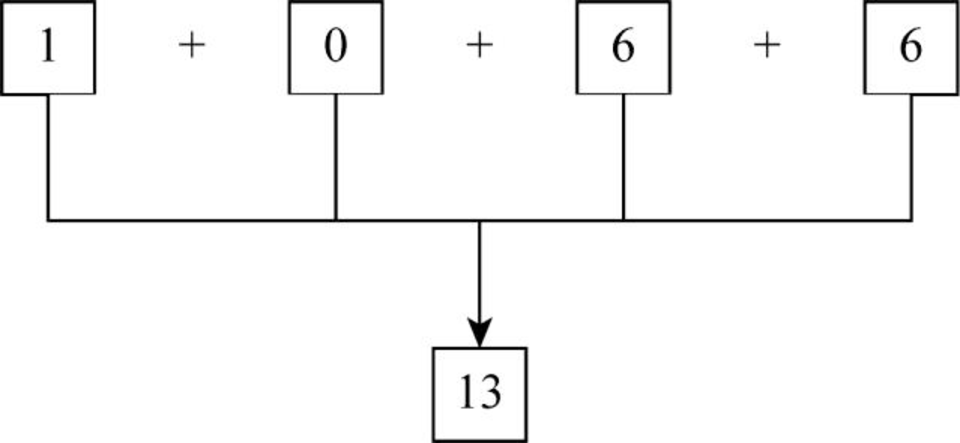
- Step 2: From the above diagram, the sum of digits produces the result as 13.
- Step 3: The unit’s place in the sum represents the check digit. Thus, “3” is in the unit’s place.
- Step 4: Therefore, check digit for the number 1066 is 3.
Additional digit:
- Step 1: In the given number 1066, take the numbers from the odd position from left to right.
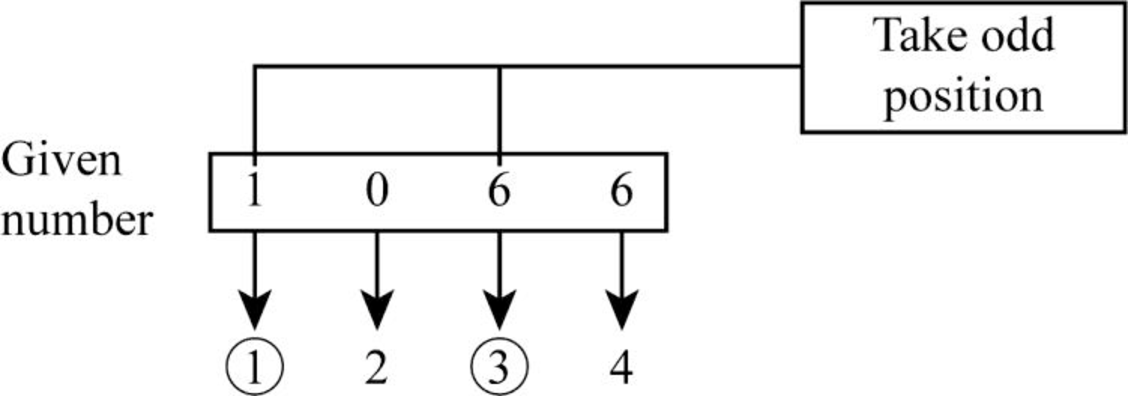
- Step 2: From the above diagram, it is clear that the number “1” on first position and the number “6” on third position are the odd position numbers.
- Step 3: The sum of digits produces the result as “7” (1+6 = 7).
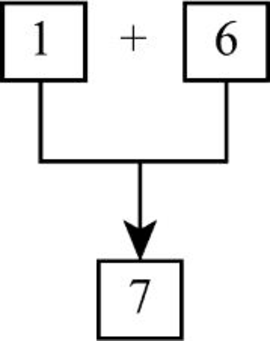
- Step 4: Hence, “7” in the unit’s place is the additional digit used along with the check digit.
Therefore, additional digit used along with the check digit “3” for the number 1066 is “7”.
Explanation of Solution
b.
Find the additional digit using the sum of odd digits for “1498” numbers:
The additional digit (using the sum of odd digits) for the number 1498 can be determined by the following steps:
Check digit:
- Step 1: Count the given number from left to right.
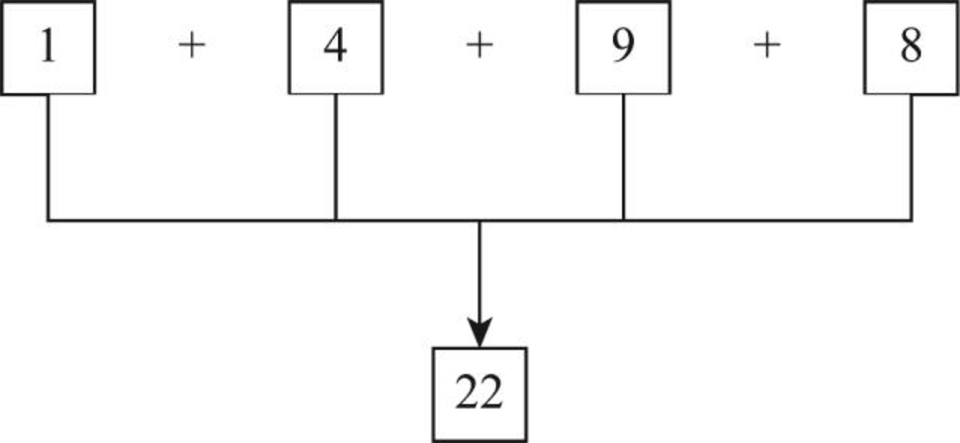
- Step 2: From the above diagram, the sum of digits produces the result as 22.
- Step 3: The unit’s place in the sum represents the check digit. Thus, “2” is in the unit’s place.
- Step 4: Therefore, check digit for the number 1498 is 2.
Additional digit:
- Step 1: In the given number 1498, take the numbers from the odd position from left to right.
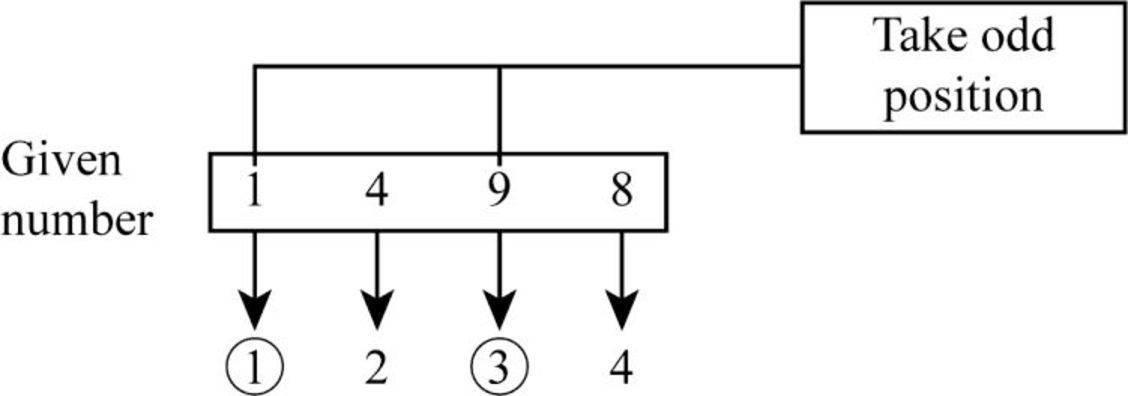
- Step 2: From the above diagram, it is clear that the number “1” on first position and the number “9” on third position are the even position numbers.
- Step 3: The sum of digits produces the result as “10” (1+9 = 10).
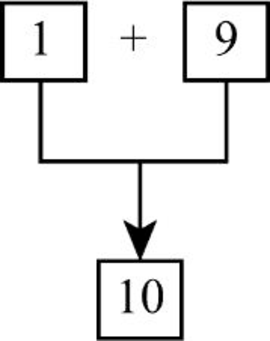
- Step 4: Hence, “0” in the unit’s place is the additional digit used along with the check digit.
Therefore, additional digit used along with the check digit “2” for the number 1498 is “0”.
Explanation of Solution
c.
Find the additional digit using the sum of odd digits for “1668” numbers:
The additional digit (using the sum of odd digits) for the number 1668 can be determined by the following steps:
Check digit:
- Step 1: Count the given number from left to right.
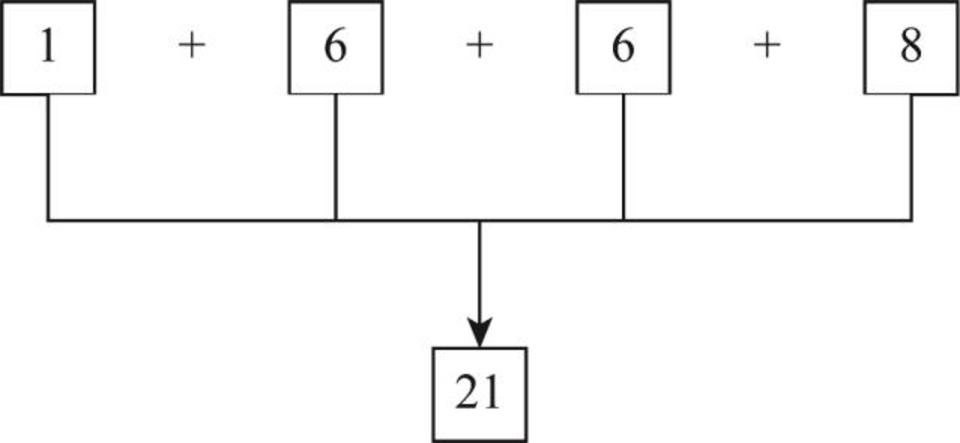
- Step 2: From the above diagram, the sum of digits produces the result as 21.
- Step 3: The unit’s place in the sum represents the check digit. Thus, “1”is in the unit’s place.
- Step 4: Therefore, the check digit for the number 1668 is 1.
Additional digit:
- Step 1: In the given number 1668, take the numbers from the odd position from left to right.
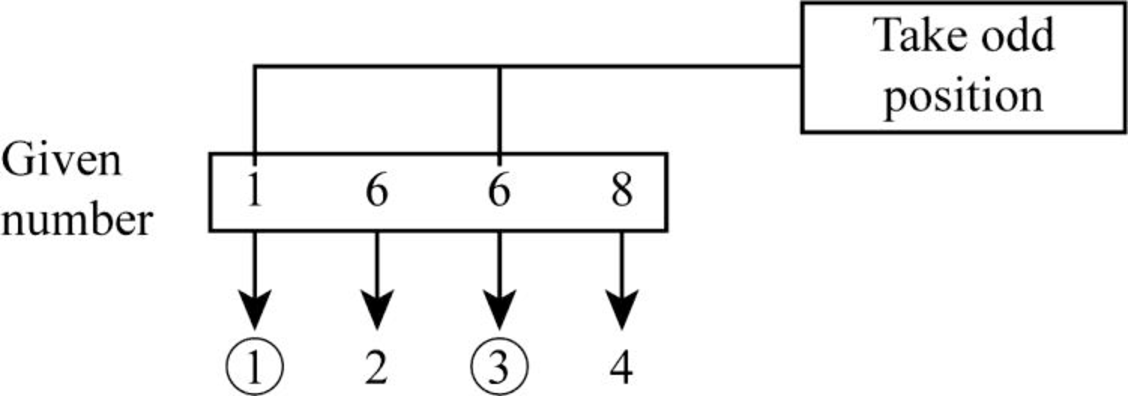
- Step 2: From the above diagram, it is clear that the number “1” on first position and the number “6” on third position are the even position numbers.
- Step 3: The sum of digits produces the result as “7” (1+6 = 7).
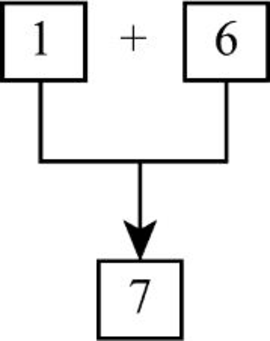
- Step 4: Hence, “7” in the unit’s place is the additional digit used along with the check digit.
Therefore, additional digit used along with the check digit “1” for the number 1668 is “7”.
Explanation of Solution
d.
Find the additional digit using the sum of odd digits for “2001” numbers:
The additional digit (using the sum of odd digits) for the number 2001 can be determined by the following steps:
Check digit:
- Step 1: Count the given number from left to right.
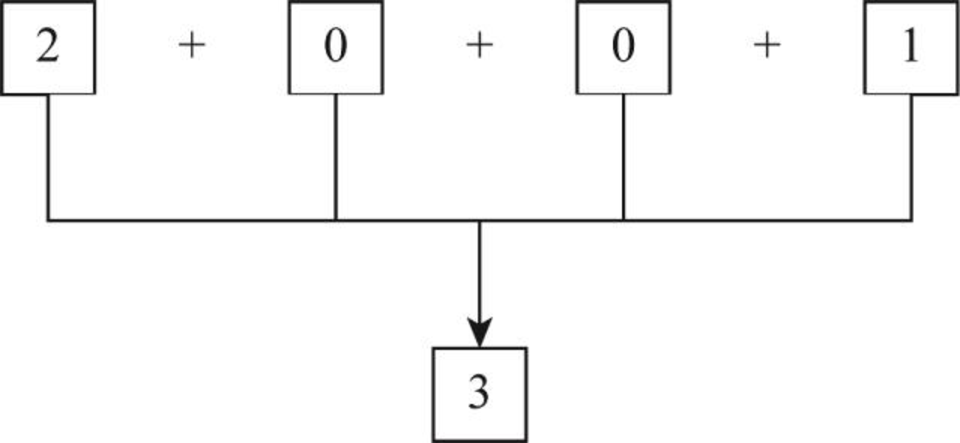
- Step 2: From the above diagram, the sum of digits produces the result as 3.
- Step 3: The unit’s place in the sum represents the check digit. Thus, “3” is in the unit’s place.
- Step 4: Therefore, check digit for the number 2001 is 3.
Additional digit:
- Step 1: In the given number 2001, take the numbers from the odd position from left to right.
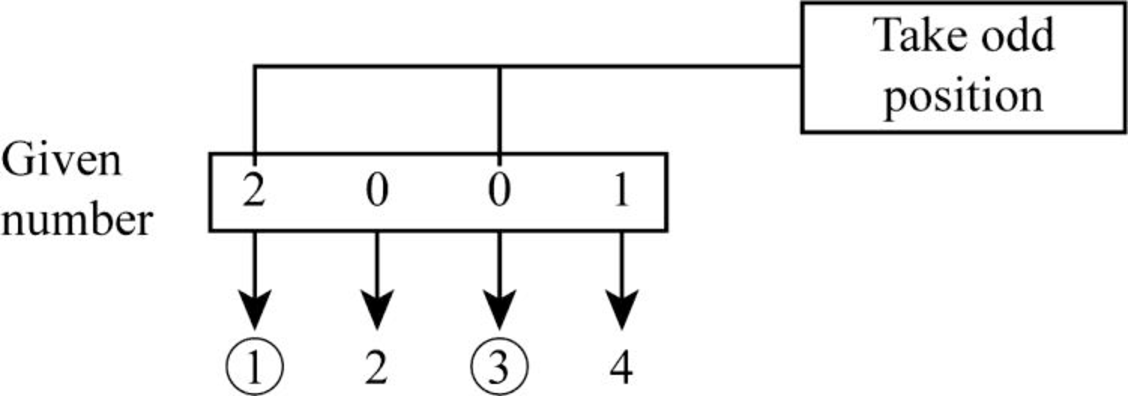
- Step 2: From the above diagram, it is clear that the number “2” on first position and the number “0” on third position are the even position numbers.
- Step3: The sum of digits produces the result as “2” (2+0 = 2).
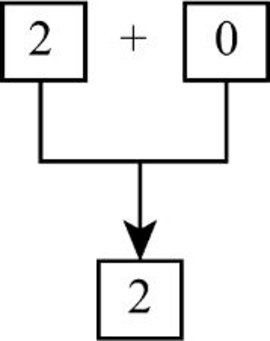
- Step 4: Hence, “2” in the unit’s place is the additional digit used along with the check digit.
Therefore, additional digit used along with the check digit “3” for the number 2001 is “2”.
Explanation of Solution
e.
Find the additional digit using the sum of odd digits for “4040” numbers:
The additional digit (using the sum of odd digits) for the number 4040 can be determined by the following steps:
Check digit:
- Step 1: Count the given number from left to right.
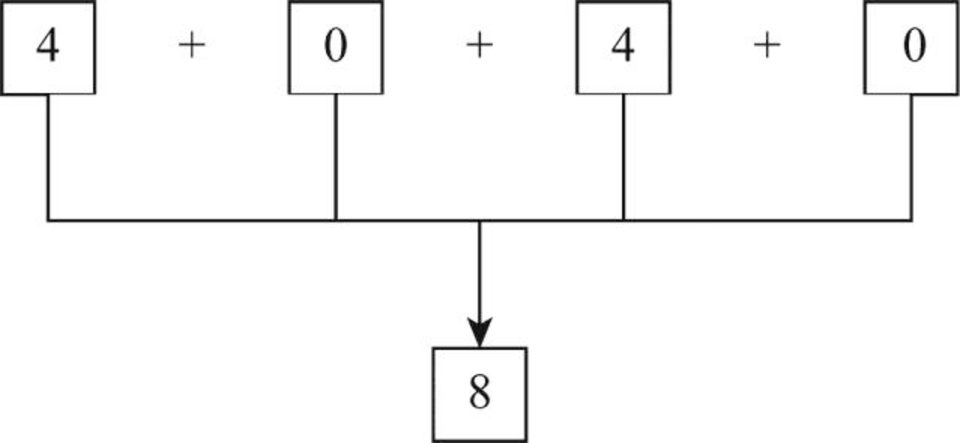
- Step 2: From the above diagram, the sum of digits produces the result as 8.
- Step3: The unit’s place in the sum represents the check digit. Thus, “8” is in the unit’s place.
- Step 4: Therefore, check digit for the number 4040 is 8.
Additional digit:
- Step 1: In the given number 4040, take the numbers from the odd position from left to right.
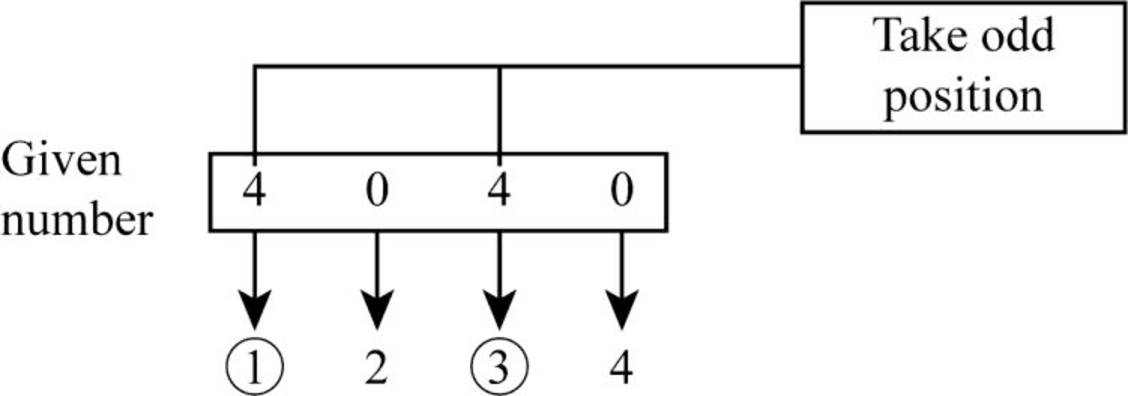
- Step 2: From the above diagram, it is clear that the number “4” on first position and the number “0” on third position are the even position numbers.
- Step3: The sum of digits produces the result as “4” (4+4 = 8).
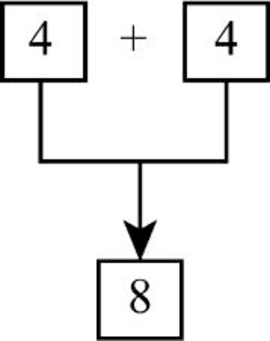
- Step4: Hence, “4” in the unit’s place is the additional digit used along with the check digit.
Therefore, additional digit used along with the check digit “8” for the number 4040 is “8”.
Want to see more full solutions like this?
Chapter 18 Solutions
COMPUTER SCIENCE ILLUMINATED
- Obtain the MUX design for the function F(X,Y,Z) = (0,3,4,7) using an off-the-shelf MUX with an active low strobe input (E).arrow_forwardI cannot program smart home automation rules from my device using a computer or phone, and I would like to know how to properly connect devices such as switches and sensors together ? Cisco Packet Tracer 1. Smart Home Automation:o Connect a temperature sensor and a fan to a home gateway.o Configure the home gateway so that the fan is activated when the temperature exceedsa set threshold (e.g., 30°C).2. WiFi Network Configuration:o Set up a wireless LAN with a unique SSID.o Enable WPA2 encryption to secure the WiFi network.o Implement MAC address filtering to allow only specific clients to connect.3. WLC Configuration:o Deploy at least two wireless access points connected to a Wireless LAN Controller(WLC).o Configure the WLC to manage the APs, broadcast the configured SSID, and applyconsistent security settings across all APs.arrow_forwardusing r language for integration theta = integral 0 to infinity (x^4)*e^(-x^2)/2 dx (1) use the density function of standard normal distribution N(0,1) f(x) = 1/sqrt(2pi) * e^(-x^2)/2 -infinity <x<infinity as importance function and obtain an estimate theta 1 for theta set m=100 for the estimate whatt is the estimate theta 1? (2)use the density function of gamma (r=5 λ=1/2)distribution f(x)=λ^r/Γ(r) x^(r-1)e^(-λx) x>=0 as importance function and obtain an estimate theta 2 for theta set m=1000 fir the estimate what is the estimate theta2? (3) use simulation (repeat 1000 times) to estimate the variance of the estimates theta1 and theta 2 which one has smaller variance?arrow_forward
- using r language A continuous random variable X has density function f(x)=1/56(3x^2+4x^3+5x^4).0<=x<=2 (1) secify the density g of the random variable Y you find for the acceptance rejection method. (2) what is the value of c you choose to use for the acceptance rejection method (3) use the acceptance rejection method to generate a random sample of size 1000 from the distribution of X .graph the density histogram of the sample and compare it with the density function f(x)arrow_forwardusing r language a continuous random variable X has density function f(x)=1/4x^3e^-(pi/2)^4,x>=0 derive the probability inverse transformation F^(-1)x where F(x) is the cdf of the random variable Xarrow_forwardusing r language in an accelerated failure test, components are operated under extreme conditions so that a substantial number will fail in a rather short time. in such a test involving two types of microships 600 chips manufactured by an existing process were tested and 125 of them failed then 800 chips manufactured by a new process were tested and 130 of them failed what is the 90%confidence interval for the difference between the proportions of failure for chips manufactured by two processes? using r languagearrow_forward
- I want a picture of the tools and the pictures used Cisco Packet Tracer Smart Home Automation:o Connect a temperature sensor and a fan to a home gateway.o Configure the home gateway so that the fan is activated when the temperature exceedsa set threshold (e.g., 30°C).2. WiFi Network Configuration:o Set up a wireless LAN with a unique SSID.o Enable WPA2 encryption to secure the WiFi network.o Implement MAC address filtering to allow only specific clients to connect.3. WLC Configuration:o Deploy at least two wireless access points connected to a Wireless LAN Controller(WLC).o Configure the WLC to manage the APs, broadcast the configured SSID, and applyconsistent security settings across all APs.arrow_forwardA. What will be printed executing the code above?B. What is the simplest way to set a variable of the class Full_Date to January 26 2020?C. Are there any empty constructors in this class Full_Date?a. If there is(are) in which code line(s)?b. If there is not, how would an empty constructor be? (create the code lines for it)D. Can the command std::cout << d1.m << std::endl; be included after line 28 withoutcausing an error?a. If it can, what will be printed?b. If it cannot, how could this command be fixed?arrow_forwardCisco Packet Tracer Smart Home Automation:o Connect a temperature sensor and a fan to a home gateway.o Configure the home gateway so that the fan is activated when the temperature exceedsa set threshold (e.g., 30°C).2. WiFi Network Configuration:o Set up a wireless LAN with a unique SSID.o Enable WPA2 encryption to secure the WiFi network.o Implement MAC address filtering to allow only specific clients to connect.3. WLC Configuration:o Deploy at least two wireless access points connected to a Wireless LAN Controller(WLC).o Configure the WLC to manage the APs, broadcast the configured SSID, and applyconsistent security settings across all APs.arrow_forward
- Transform the TM below that accepts words over the alphabet Σ= {a, b} with an even number of a's and b's in order that the output tape head is positioned over the first letter of the input, if the word is accepted, and all letters a should be replaced by the letter x. For example, for the input aabbaa the tape and head at the end should be: [x]xbbxx z/z,R b/b,R F ① a/a,R b/b,R a/a, R a/a,R b/b.R K a/a,R L b/b,Rarrow_forwardGiven the C++ code below, create a TM that performs the same operation, i.e., given an input over the alphabet Σ= {a, b} it prints the number of letters b in binary. 1 #include 2 #include 3 4- int main() { std::cout > str; for (char c : str) { if (c == 'b') count++; 5 std::string str; 6 int count = 0; 7 char buffer [1000]; 8 9 10 11- 12 13 14 } 15 16- 17 18 19 } 20 21 22} std::string binary while (count > 0) { binary = std::to_string(count % 2) + binary; count /= 2; std::cout << binary << std::endl; return 0;arrow_forwardConsidering the CFG described below, answer the following questions. Σ = {a, b} • NT = {S} Productions: P1 S⇒aSa P2 P3 SbSb S⇒ a P4 S⇒ b A. List one sequence of productions that can accept the word abaaaba; B. Give three 5-letter words that can be accepted by this CFG; C. Create a Pushdown automaton capable of accepting the language accepted by this CFG.arrow_forward
 Database System ConceptsComputer ScienceISBN:9780078022159Author:Abraham Silberschatz Professor, Henry F. Korth, S. SudarshanPublisher:McGraw-Hill Education
Database System ConceptsComputer ScienceISBN:9780078022159Author:Abraham Silberschatz Professor, Henry F. Korth, S. SudarshanPublisher:McGraw-Hill Education Starting Out with Python (4th Edition)Computer ScienceISBN:9780134444321Author:Tony GaddisPublisher:PEARSON
Starting Out with Python (4th Edition)Computer ScienceISBN:9780134444321Author:Tony GaddisPublisher:PEARSON Digital Fundamentals (11th Edition)Computer ScienceISBN:9780132737968Author:Thomas L. FloydPublisher:PEARSON
Digital Fundamentals (11th Edition)Computer ScienceISBN:9780132737968Author:Thomas L. FloydPublisher:PEARSON C How to Program (8th Edition)Computer ScienceISBN:9780133976892Author:Paul J. Deitel, Harvey DeitelPublisher:PEARSON
C How to Program (8th Edition)Computer ScienceISBN:9780133976892Author:Paul J. Deitel, Harvey DeitelPublisher:PEARSON Database Systems: Design, Implementation, & Manag...Computer ScienceISBN:9781337627900Author:Carlos Coronel, Steven MorrisPublisher:Cengage Learning
Database Systems: Design, Implementation, & Manag...Computer ScienceISBN:9781337627900Author:Carlos Coronel, Steven MorrisPublisher:Cengage Learning Programmable Logic ControllersComputer ScienceISBN:9780073373843Author:Frank D. PetruzellaPublisher:McGraw-Hill Education
Programmable Logic ControllersComputer ScienceISBN:9780073373843Author:Frank D. PetruzellaPublisher:McGraw-Hill Education





